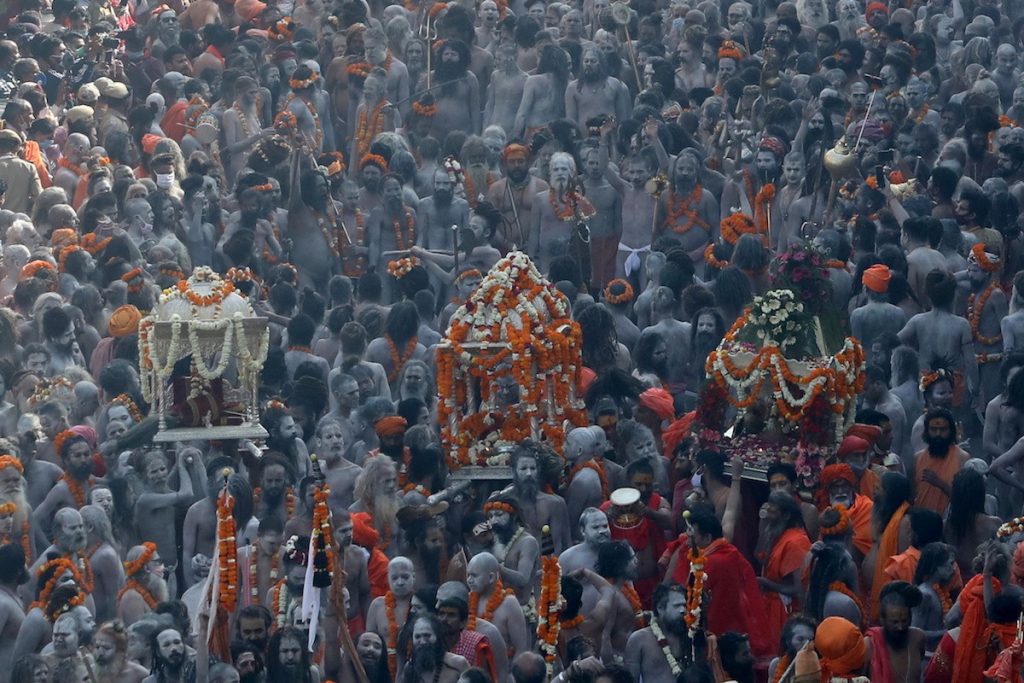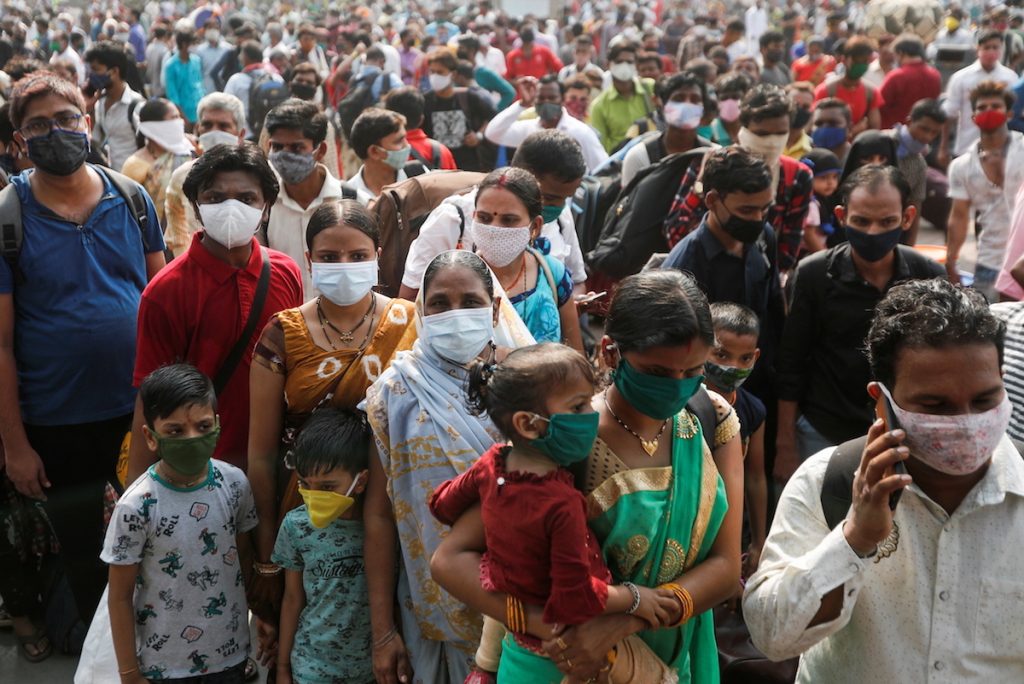
India’s new coronavirus infections hit a record on April 14, as crowds of pilgrims gathered for a religious festival despite oxygen shortages and strict curbs in other areas.
The country reported 184,372 cases in the last 24 hours, health ministry data showed, taking total infections to 13.9 million. Deaths rose by 1,027, to a toll of 172,085.
Still, hundreds of thousands of devout Hindus gathered to bathe in the Ganges river on April 14, the third key day of the weeks-long Kumbh Mela or pitcher festival.
Sanjay Gunjyal, the inspector general of police at the festival, said around 650,000 people had bathed on the morning of April 14.
“People are being fined for not following social distancing in non crowded ghats (bathing areas), but it is very hard to fine people in the main ghats, which are very crowded,” he said.
There was little evidence of social distancing or mask-wearing, according to a Reuters witness.
More than a thousand cases have been reported in Haridwar district in the last two days, according to government data.

From reporting less than 10,000 cases per day earlier this year, India has been the world’s worst-hit country since April 2 by new daily cases, with the government blaming a widespread failure to heed curbs on movement and social interaction.
India’s richest state Maharashtra, the epicentre of the national second wave and which accounts for about a quarter of the country’s cases, is due to impose stringent restrictions from April 14 to try to contain the spread.
Elsewhere, overstretched private hospitals are turning patients away, placing an increasing burden on government facilities.
In the western state of Gujurat, local media showed a long queue of ambulances waiting outside Ahmedabad Civil Hospital, with some patients being treated there while they waited.
A hospital source, who declined to be named as he is not authorized to speak publicly, said this was because a lot of private hospitals were short of oxygen and were sending their patients to the public hospital.
Source: Licas Philippines
0 Comments